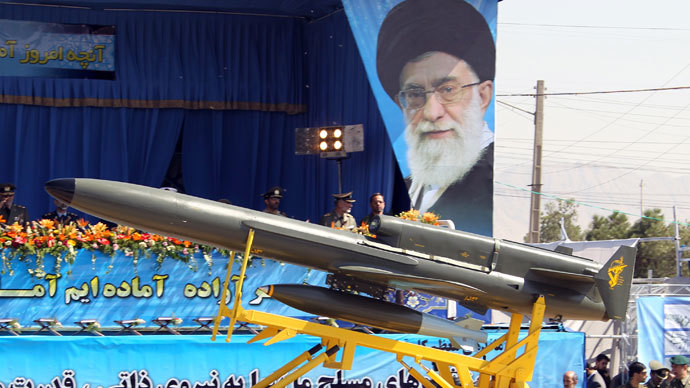Iran hires more long-range assault UAVs, set to teach ‘drone hunting’ in schools

Iran’s aircraft sector claims giant advancements in designing and manufacturing drones, including those with assault capabilities. It comes as Iran’s aerospace industry eyes raising security levels early on – by bringing alien drone hunting into schools.
Lieutenant commander of the Iranian Navy, Rear Admiral Gholam
Reza Khadem Biqam, has revealed that dozens of new surveillance
and assault UAVs have been delivered to the country’s Navy.
“At present, the Navy is in possession of drones in proper
sizes and with good range that are used for our intelligence
domination in the region," Khadem Biqam told Iran’s Fars News
Agency (FNA) on Tuesday.
Commander of Khatam ol-Anbia Air Defense Base, Brigadier General
Farzad Esmayeeli, acknowledged in June that Iran’s most common
homemade UAV is the long-range Sarir (Throne) drone which is
capable of carrying high-precision cameras and air-to-air
missiles.
“These missiles enable Sarir to confront and combat multiple
targets, including invading UAVs,” he said.
Esmayeeli also announced to troops the arrival of a more advanced
drone, Haazem, set to be introduced on Air Defense Day in
September. Haazem will reportedly be produced in short-, mid- and
long-range versions - specializing in reconnaissance, air
defense, ground assault, or serving as training targets for
national air defenses.
Last week, Brigadier General Farzad Esmayeeli said that Iran’s
airspace is rarely violated these days due to constant
preparedness of frontier guards.
“Perhaps some time ago there were some drones which sought to
enter the country and they were hunted down or a number of drones
came close to the country's borders and then receded, but at
present they are not seen and the enemy is afraid of sending
drones to Iran,” Esmayeeli declared in the north-eastern city
of Mashhad on Saturday. “Such flights have severely decreased,
but we are still vigilant,” he added.
The Islamic Revolution Guards Corps (IRGC) electronic warfare
divisions can sufficiently override an alien drone guidance
system by capturing it and forcing a landing on Iranian territory
– which Tehran says has already happened. In December 2011,
Iran’s air defense forces captured intact America’s top-secret
RQ-170 Sentinel drone. A year later, in December 2012, the IRGC
Navy hunted down the American ScanEagle drone, which is
“usually launched from large warships.”
Drone hunting might soon become a special course of study in
Iranian schools.
“This year, we will witness changes in the contents, teachers
and teaching hours of the defensive preparedness lesson,"
remarked deputy commander of Iran’s Basij Forces, General Ali
Fazli, as quoted by FNA. The Basij Forces are a paramilitary
group of young volunteers.
FNA noted that drone-hunting would become part of a larger
“defensive preparedness curriculum” to be taught in both
junior and senior schools, for two and three hours every week
respectively.
It is expected that schoolchildren would be taught the hacking of
drone controls rather than how to shoot them down with
conventional weapons.














